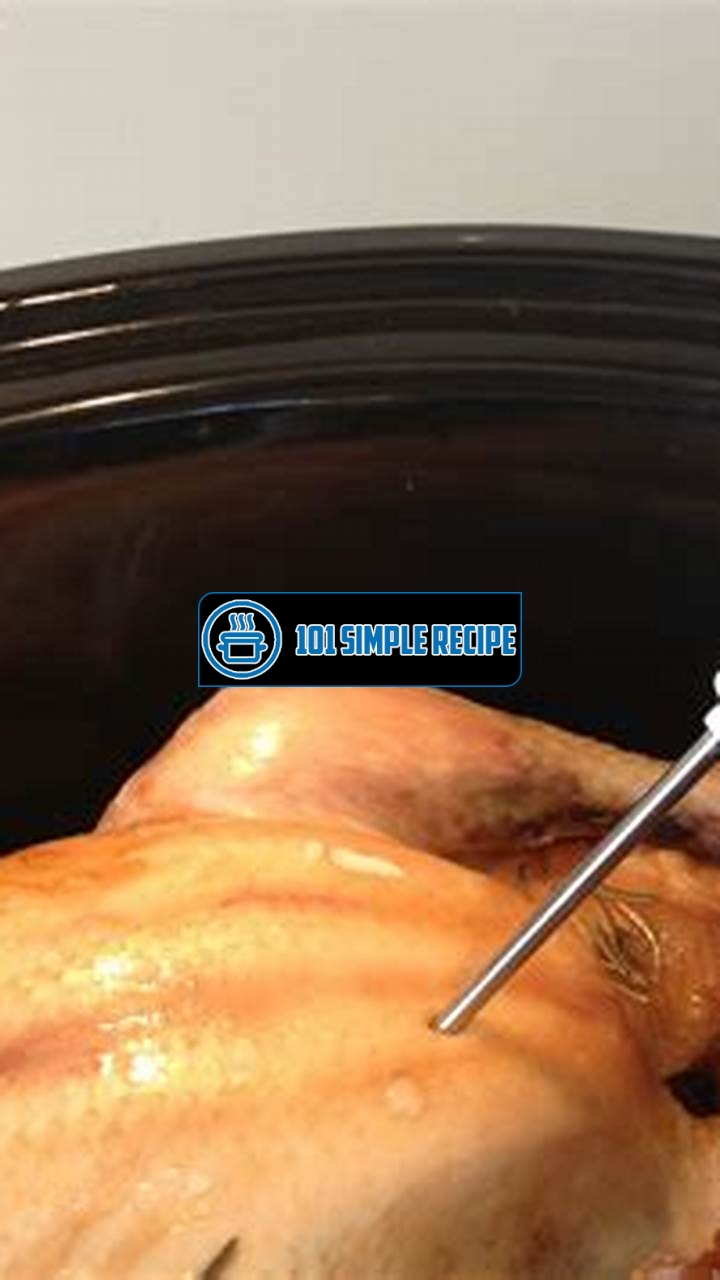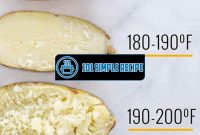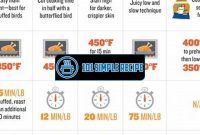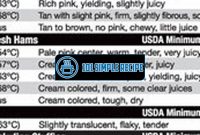Do you love cooking chicken but often find it challenging to determine the ideal internal temperature for safe and delicious results? Well, look no further! In this article, we will guide you through the process of discovering the perfect chicken internal temperature. Knowing this crucial detail will ensure that your chicken is not only cooked to perfection but is safe to consume as well.

Understanding Chicken Internal Temperature
Understanding the ideal chicken internal temperature is crucial when it comes to cooking poultry. Whether you are grilling, roasting, or frying, ensuring that your chicken reaches the right internal temperature will not only guarantee its safety but also result in a delicious culinary experience. In this section, we will delve into the key information about chicken internal temperature to help you achieve perfect cooking results every time.
What is Chicken Internal Temperature?
Chicken internal temperature refers to the heat at which the chicken is cooked thoroughly, eliminating any harmful bacteria that may be present. It is important to note that different parts of the chicken require different internal temperatures for safe consumption. For instance, the internal temperature for chicken breasts, thighs, wings, and drumsticks will vary slightly.
To ensure that your chicken is safe to eat, the minimum internal temperature should reach 165°F (74°C). This temperature is considered safe by food safety experts as it kills any bacteria, such as salmonella, that might be present in the meat.
Why is Chicken Internal Temperature Important?
Chicken internal temperature is of utmost importance due to food safety concerns. Undercooked chicken can harbor harmful bacteria that can cause foodborne illnesses, such as salmonella or Campylobacter. Consuming undercooked chicken can lead to symptoms like nausea, vomiting, diarrhea, and abdominal pain.
By cooking chicken to the correct internal temperature, you kill off any bacteria and ensure that your meal is safe to consume. Additionally, cooking chicken to the right temperature ensures that it is cooked to perfection, resulting in juicy and tender meat.
Factors Affecting Chicken Internal Temperature
Several factors can affect the internal temperature of chicken. These factors can range from the cooking method to the thickness of the meat. Considering these factors will help you achieve the desired internal temperature and prevent undercooked or overcooked chicken.
- Cooking method: The cooking method you choose can affect how evenly the heat is distributed throughout the chicken. Whether you grill, bake, fry, or roast your chicken, it is crucial to monitor the internal temperature using a meat thermometer.
- Size and thickness: The size and thickness of the chicken pieces play a significant role in determining the cooking time and internal temperature. Thicker cuts of chicken will require more time to reach the desired temperature compared to thinner cuts.
- Starting temperature: The starting temperature of the chicken, especially if it was previously refrigerated, can impact the cooking time and internal temperature. It is recommended to allow the chicken to come to room temperature for even cooking.
Remember, ensuring the ideal chicken internal temperature not only guarantees food safety but also results in mouthwatering and flavorful chicken dishes. So, be sure to use a meat thermometer and follow the recommendations for each part of the chicken you are cooking to achieve the best results!
Safe Minimum Internal Temperatures for Chicken
When it comes to cooking chicken, one of the most important things to consider is the internal temperature. Cooking chicken to the appropriate internal temperature not only ensures that it is safe to consume but also guarantees delicious and flavorful results. In this article, we will explore the recommended minimum internal temperatures for various chicken products to reduce the risk of foodborne illnesses.
Minimum Internal Temperature for Whole Chicken
When cooking a whole chicken, it is crucial to reach the correct internal temperature to ensure both safety and taste. The recommended minimum internal temperature for a whole chicken is 165°F (74°C). At this temperature, any harmful bacteria present in the chicken will be killed, making it safe to eat. Achieving this temperature ensures that the chicken is fully cooked, moist, and tender. Remember to measure the temperature in the thickest part of the chicken, such as the thigh, to ensure an accurate reading.
Minimum Internal Temperature for Chicken Breasts
If you prefer boneless chicken breasts, it is essential to cook them to the appropriate internal temperature. The minimum internal temperature for chicken breasts is 165°F (74°C). This ensures that the chicken is not only safe to eat but also juicy and flavorful. Overcooked chicken breasts can become dry and tough, so it is vital to use a thermometer to check the internal temperature and avoid overcooking.
To cook chicken breasts to perfection, you can follow a few simple steps. First, preheat your oven to 375°F (190°C). Season the chicken breasts with your choice of spices and herbs. Place the chicken breasts on a baking sheet and cook them until they reach an internal temperature of 165°F (74°C). Let the chicken rest for a few minutes before slicing and serving for maximum tenderness and flavor.
Minimum Internal Temperature for Chicken Thighs and Drumsticks
Chicken thighs and drumsticks are often preferred by those who enjoy darker meat. To ensure that these cuts of chicken are safe to eat, the minimum internal temperature is 165°F (74°C). Cooking chicken thighs and drumsticks to this temperature guarantees that any harmful bacteria are destroyed, minimizing the risk of foodborne illnesses.
A great way to cook chicken thighs and drumsticks is by grilling or baking them. For grilling, preheat your grill to medium heat. Season the chicken with your favorite marinade or spices and place them on the grill. Cook the chicken until the internal temperature reaches 165°F (74°C), flipping them occasionally for even cooking. If you prefer baking, preheat your oven to 425°F (220°C) and place the seasoned chicken thighs or drumsticks on a baking sheet. Bake them until they reach the recommended internal temperature.
Remember, cooking chicken to the appropriate internal temperature is essential for both safety and taste. By following these guidelines and using a food thermometer, you can ensure that your chicken is cooked thoroughly and is safe to eat. So the next time you prepare chicken, keep these minimum internal temperatures in mind to achieve safe and delicious results!
Benefits of Cooking Chicken to the Right Temperature
When it comes to cooking chicken, it is essential to ensure that it reaches the ideal internal temperature for both safety and flavor. This article explores the advantages of cooking chicken to the appropriate internal temperature, including improved food safety, enhanced taste, and a tender, moist texture.
Enhanced Food Safety
Cooking chicken to the right temperature is crucial for ensuring food safety and preventing foodborne illnesses. Chicken can harbor harmful bacteria such as Salmonella and Campylobacter, which can cause significant health risks if consumed undercooked.
By cooking chicken to the appropriate internal temperature, you can effectively kill these bacteria and reduce the risk of food poisoning. The recommended internal temperature for cooking chicken is 165°F (74°C), as measured by a reliable food thermometer. This temperature ensures that any potential pathogens present in the chicken are eliminated, making it safe for consumption.
Note: Always remember to clean your food thermometer properly before and after each use to maintain accurate readings.
Optimal Taste and Juiciness
Cooking chicken to the right internal temperature not only guarantees food safety but also improves its taste and juiciness. Overcooked chicken can turn dry and rubbery, while undercooked chicken may have a raw texture and unpleasant taste.
By cooking chicken to the recommended internal temperature, you achieve the perfect balance between doneness, flavor, and juiciness. At 165°F (74°C), the chicken is cooked through, resulting in moist and tender meat. The heat allows the chicken’s natural juices to distribute evenly, enhancing its flavor and ensuring a delightful dining experience.
- Cooking chicken to the ideal internal temperature ensures optimal taste and juiciness.
- Overcooked chicken can be dry and rubbery, while undercooked chicken may have a raw texture.
Tender and Moist Chicken
One of the primary benefits of cooking chicken to the appropriate internal temperature is the tenderness and moistness it offers. When chicken reaches 165°F (74°C), the proteins in the meat denature, resulting in a tender texture. Additionally, the heat breaks down the connective tissues, making the chicken more succulent and easier to chew.
Tip: To retain the moisture and tenderness of the chicken, consider using cooking methods such as baking, roasting, or grilling rather than frying.
By cooking chicken to the right internal temperature, you can avoid the risk of serving tough and dry chicken, ensuring a satisfying meal for yourself and your guests. It is important to note that different cuts of chicken may have different ideal internal temperatures, so it is always best to refer to a reliable cooking guide or use a food thermometer to ensure precision.
Overall, cooking chicken to the proper internal temperature has numerous benefits, including improved food safety, enhanced taste and juiciness, and tender, moist chicken. By following the recommended guidelines and using a food thermometer, you can achieve delicious and safe results every time you cook chicken.
Methods to Measure Chicken Internal Temperature
Discover the various tools and techniques to accurately measure the internal temperature of chicken for perfect cooking.
Using a Meat Thermometer
Using a meat thermometer is the most accurate and reliable method to determine the internal temperature of chicken. This essential tool takes the guesswork out of cooking poultry to perfection.
When using a meat thermometer, insert the probe into the thickest part of the chicken, away from any bones. Ensure the probe is inserted deep enough to measure the core temperature. Wait for a few seconds until the reading stabilizes. The ideal internal temperature for cooked chicken should reach a minimum of 165°F (74°C) to ensure it is safe to eat and free from harmful bacteria.
Tip: Invest in a digital meat thermometer for quick and accurate temperature readings. It provides a digital display, eliminating the need to guess readings.
Visual Indications of Doneness
In addition to using a meat thermometer, visual indications can also help determine the doneness of chicken. These indications include the appearance and color of the chicken.
Appearance: When chicken is fully cooked, it should have a golden-brown color and appear crispy on the outside. The skin should be well-rendered and free from any raw or pink areas. If using bone-in chicken, the bones near the joints should move easily, indicating that the chicken is cooked thoroughly.
Color: The color of properly cooked chicken can vary depending on the cooking method used. Grilled or roasted chicken may have a darker color due to the Maillard reaction, while chicken cooked in a liquid or stew may have a lighter color. Regardless of the cooking method, always ensure that the chicken is uniformly cooked and reaches the recommended internal temperature.
Testing Chicken with a Fork or Knife
If a meat thermometer is not available, you can also test the doneness of chicken using a fork or knife. However, this method is less reliable and may not provide accurate results.
When using a fork or knife, pierce the thickest part of the chicken and observe the color of the juices. If the juices run clear and there is no pink or redness, the chicken is likely cooked. However, to ensure it is safe to eat, it is still recommended to use a meat thermometer to measure the internal temperature.
Note: To prevent dryness and loss of juices, it is best to limit the number of times you pierce the chicken. Multiple punctures can cause the juices to escape, resulting in dry and less flavorful meat.
In conclusion, measuring the internal temperature of chicken is crucial for safe and delicious results. Using a meat thermometer is the most accurate method, providing reliable readings to ensure the chicken is fully cooked. Visual indications like appearance and color also play a role in determining doneness, but they should be used in conjunction with a meat thermometer for optimal results. If a meat thermometer is unavailable, you can use a fork or knife as an alternative, although it may not provide precise readings. By following these methods, you can confidently cook chicken to perfection every time.
Safety Tips for Chicken Cooking
Proper handling, storage, and cooking of chicken are essential to ensure food safety and delicious results. By following the necessary safety guidelines and best practices, you can minimize the risk of foodborne illnesses and enjoy a safe and enjoyable meal. In this article, we will explore some important tips for cooking chicken safely.
Thawing Chicken Safely
Thawing chicken correctly is crucial to prevent the growth of harmful bacteria. There are three safe methods for thawing chicken:
- Refrigerator Thawing: This is the safest method, although it requires some planning ahead. Place the frozen chicken on a plate or in a container and let it thaw in the refrigerator. Allow approximately 24 hours for every 5 pounds of chicken. Remember to keep the chicken wrapped securely to prevent cross-contamination.
- Cold Water Thawing: If you need to thaw chicken quickly, you can use the cold water method. Place the chicken in a leak-proof plastic bag and submerge it in cold water. Change the water every 30 minutes to ensure it stays cold. It usually takes about 30 minutes per pound to thaw chicken using this method.
- Microwave Thawing: If you’re short on time, you can use the microwave to thaw chicken. However, this method is not recommended as some parts of the chicken may start to cook during the process, leading to uneven thawing. If you choose this method, make sure to cook the chicken immediately after thawing.
Preventing Cross-Contamination
Cross-contamination is a significant concern when handling raw chicken. It occurs when bacteria from raw chicken spreads to other surfaces, utensils, or foods. To prevent cross-contamination:
- Separate Raw and Cooked Foods: Keep raw chicken separate from other foods, especially those that won’t be cooked, such as salads or fruits. Use separate cutting boards, knives, and utensils for raw chicken and other ingredients.
- Wash Hands Thoroughly: Wash your hands with soap and warm water before and after handling raw chicken. This simple practice helps eliminate any bacteria that may be present.
- Don’t Rinse Chicken: Contrary to popular belief, rinsing chicken under running water is not recommended. It can spread bacteria to your sink, countertops, and utensils. Cooking chicken to the proper internal temperature will effectively kill any bacteria present.
Storing Chicken Properly
Proper storage of chicken is crucial to maintain its quality and prevent bacterial growth. Here are some key guidelines to follow:
- Refrigerate promptly: After purchasing or cooking chicken, refrigerate it within two hours to prevent bacterial growth. Keep the temperature of your refrigerator set at or below 40°F (4°C).
- Use airtight packaging: Store chicken in leak-proof containers or sealed plastic bags to prevent juices from contaminating other foods in the refrigerator.
- Respect expiration dates: Always check the expiration dates on the packages of chicken and use or freeze them before they expire.
Remember: Chicken is safe to eat when it reaches the proper internal temperature. Using a thermometer to measure the internal temperature of cooked chicken is the most effective way to ensure it’s safe for consumption.
By following these safety tips for chicken cooking, you can enjoy delicious and safe meals with your loved ones. Properly handling, thawing, and storing chicken will help you prevent foodborne illnesses and ensure a satisfying dining experience.
Ensuring Chicken Internal Temperature in Different Cooking Methods
When it comes to cooking chicken, ensuring that it reaches the ideal internal temperature is crucial. The internal temperature of chicken determines its safety and deliciousness, as undercooked chicken can pose health risks, while overcooked chicken can become dry and tough. In this article, we will explore the different cooking methods for chicken and guide you on how to achieve the correct internal temperature for safe and delicious results.
Grilling Chicken
Grilling chicken is a popular method that infuses the meat with smoky flavors and creates a crispy skin. To achieve the ideal internal temperature when grilling chicken, follow these steps:
- Preheat your grill to a medium-high heat, around 375°F (190°C). It is important to have consistent heat throughout the cooking process.
- Use a meat thermometer to check the internal temperature of the chicken. Insert the thermometer into the thickest part of the meat, away from the bone.
- Cook the chicken until it reaches an internal temperature of 165°F (74°C). This ensures that any harmful bacteria are killed, making the chicken safe to consume.
- Once the chicken reaches the ideal internal temperature, remove it from the grill and let it rest for a few minutes before serving. This allows the juices to redistribute, resulting in a moist and flavorful chicken.
Note: ️ It is important to avoid overcooking the chicken on the grill, as it can lead to dry and rubbery meat.
Roasting Chicken
Roasting chicken in the oven is a classic cooking method that yields tender and succulent meat. To ensure the correct internal temperature when roasting chicken, follow these guidelines:
- Preheat your oven to 425°F (220°C). The high temperature helps to brown the skin and seal in the juices.
- Place the chicken on a roasting rack in a roasting pan. This elevates the chicken, allowing the hot air to circulate evenly.
- Insert a meat thermometer into the thickest part of the chicken, avoiding contact with the bone.
- Roast the chicken until it reaches an internal temperature of 165°F (74°C). This ensures that it is safe to eat.
- Once the chicken reaches the desired temperature, remove it from the oven and let it rest for a few minutes. This resting period allows the juices to redistribute, resulting in a juicy and flavorful chicken.
Note: ️ Be cautious not to overcook the chicken, as it can lead to dryness, especially the breast meat.
Frying Chicken
Frying chicken creates a crispy and golden exterior, while keeping the meat moist and tender. To ensure the right internal temperature when frying chicken, pay attention to the following steps:
- Heat the frying oil to a temperature of 350°F (175°C). Maintaining a consistent oil temperature is important for even frying.
- Place the chicken pieces carefully into the hot oil. Avoid crowding the pan, as it can lower the oil temperature and make the chicken greasy.
- Use a meat thermometer to check the internal temperature of the chicken. The ideal reading should be 165°F (74°C).
- Once the chicken reaches the correct internal temperature, remove it from the oil and let it drain on a paper towel to remove excess oil.
Note: ️ Over-frying the chicken can result in a dry and tough texture, so it is important to monitor the temperature and cooking time closely.
By following these guidelines for grilling, roasting, and frying chicken, you can achieve the ideal internal temperature for safe and delicious results. Remember to use a meat thermometer, as it is a reliable tool to ensure that your chicken is cooked to perfection. So go ahead, try out these cooking methods, and enjoy juicy and flavorful chicken every time!
Thank you for taking the time to read our article about chicken internal temperature. We hope that you found the information helpful in ensuring that your chicken is cooked safely and deliciously. Remember, the internal temperature is a crucial factor in determining the doneness of chicken, and it is important to always use a reliable meat thermometer to achieve the proper temperature. If you have any more questions or need further assistance, please feel free to visit our website again later for more valuable insights and updates on cooking techniques.
Frequently Asked Questions
Here are some frequently asked questions about chicken internal temperature:
| No. | Questions | Answers |
|---|---|---|
| 1. | What is the safe internal temperature for chicken? | The safe internal temperature for chicken is 165°F (74°C). This temperature ensures that any harmful bacteria present in the chicken are killed, making it safe to consume. It is essential to use a meat thermometer to accurately measure the internal temperature. |
| 2. | How do I check the internal temperature of chicken? | To check the internal temperature of chicken, insert a meat thermometer into the thickest part of the meat without touching the bone. Make sure the thermometer is not touching any fat or gristle. The temperature should read 165°F (74°C) for chicken to be safely cooked. |
| 3. | What happens if chicken is undercooked? | If chicken is undercooked, it may contain harmful bacteria such as salmonella or campylobacter. Consuming undercooked chicken can lead to food poisoning and serious health risks. It is important to always cook chicken to the recommended internal temperature of 165°F (74°C) to ensure it is safe to eat. |
| 4. | Can I cook chicken at a lower internal temperature? | No, it is not safe to cook chicken at a lower internal temperature than 165°F (74°C). The higher temperature is necessary to kill any bacteria that may be present in the chicken. Cooking chicken to the proper internal temperature ensures that it is safe to eat and reduces the risk of foodborne illnesses. |
| 5. | Can I eat chicken if it is slightly pink? | No, chicken should not be eaten if it is slightly pink. The pink color may indicate that the chicken is undercooked and may still contain harmful bacteria. It is important to always cook chicken until it reaches an internal temperature of 165°F (74°C) to ensure it is safe to consume. |
| 6. | What should I do if I accidentally overcook the chicken? | If you accidentally overcook the chicken, it may become dry and less flavorful. To salvage the overcooked chicken, you can try adding some moisture by drizzling it with a sauce or broth. Another option is to shred the overcooked chicken and use it in recipes that call for cooked chicken, such as salads or tacos. |
Closing Thoughts
We hope this article has provided you with valuable information on the importance of chicken internal temperature. Remember to always use a meat thermometer to ensure your chicken is safely cooked to the recommended internal temperature of 165°F (74°C). By following this guideline, you can enjoy delicious and safe chicken dishes every time. Thank you for reading, and we look forward to your continued visits for more helpful cooking tips and guides.
Jump to Recipe
Chicken Internal Temp

Learn about the importance of chicken internal temperature and how to properly measure it. Ensure your chicken is cooked safely and deliciously with our helpful tips and guidelines.
- 4 chicken breasts
- 1 tbsp olive oil
- 1 tsp salt
- 1 tsp black pepper
- Preheat the oven to 350°F (175°C).
- Rub the chicken breasts with olive oil, salt, and black pepper.
- Place the seasoned chicken breasts on a baking sheet and bake in the preheated oven for 30-40 minutes or until the internal temperature reaches 165°F (74°C).
- Remove the chicken from the oven and let it rest for 5 minutes before serving. Enjoy your perfectly cooked chicken!






